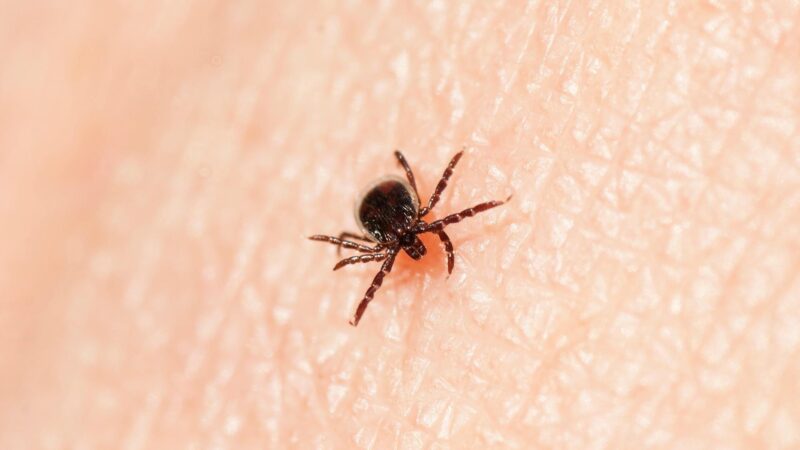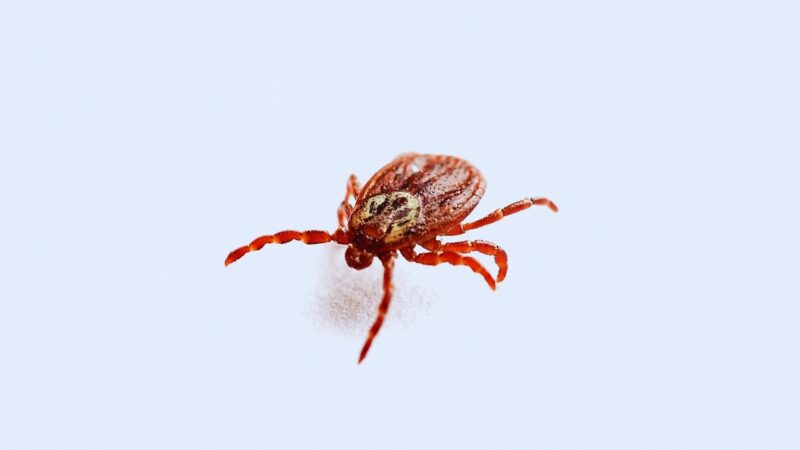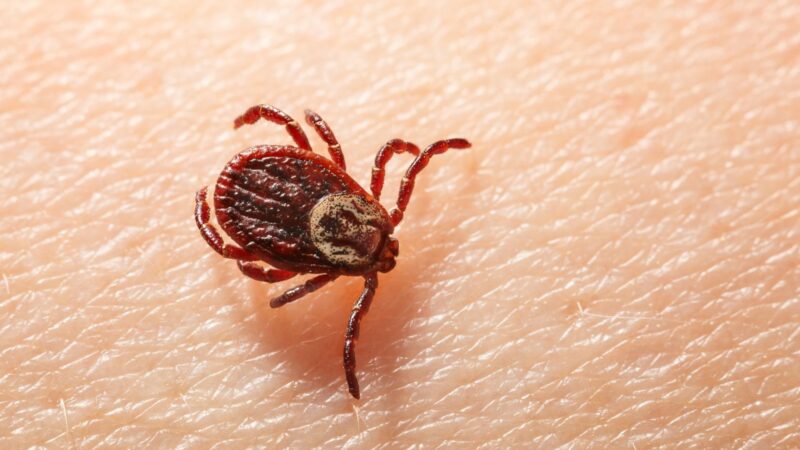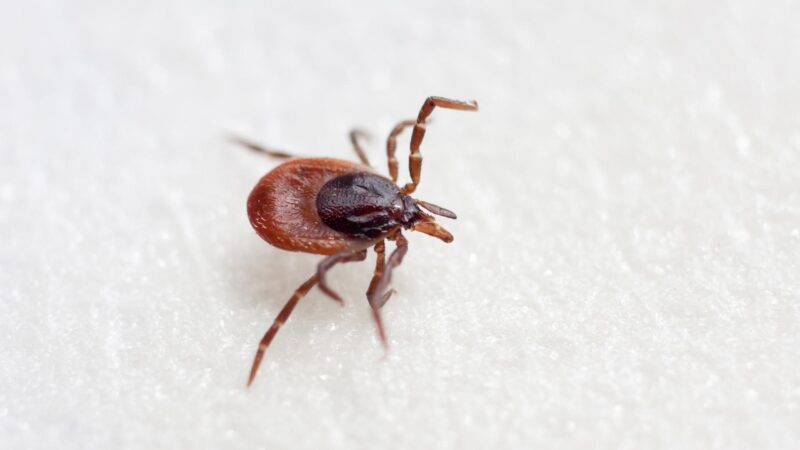Ticks are dangerous not only to pets but to humans as well. Also referred to as bug bombs, foggers are believed to be effective in solving a tick infestation in houses.
Despite being dangerous and having limitations, many people used them and did not have problems. Still, foggers continue to have a negative image.
Can you bomb a house for ticks? You can bomb a house for ticks. Bug bombs can also be used to kill fleas and mosquitoes. But it does not necessarily mean you should always use one. Aside from being not so effective in getting rid of ticks, bug bombs are flammable and could cause fire accidents indoors.
The use of foggers in getting rid of pests such as ticks has been a hot topic in debates for several decades. Also known as total release foggers, these bug bombs are not usually recommended.
In this article, you will learn important facts about ticks, how to use foggers safely, and other ways of killing ticks at home.
What Do Ticks Eat?

Unlike spiders, ticks don’t eat insects. Instead, they suck blood from their host. This includes animals, such as dogs, cats, livestock, and wild animals.
These notorious bloodsuckers attach themselves to their hosts. To suck blood, they bury their curved, backward-pointing teeth into the skin for as long as they can.
Do Ticks Invade Homes?

Ticks invade homes, and it only takes a single tick to cause an infestation. Brown dog ticks are most common in houses since their target hosts are dogs.
Your dogs can get adult ticks, nymphs, and larvae from a veterinarian’s clinic, kennel, infested homes, and while mingling with other dogs infested with ticks.
Ticks undergo four life stages – egg, larval, nymphal, and adult. A fully blood-fed female brown dog tick can lay more than 5,000 eggs, which hatch into six-legged larvae within 6-23 days.
Like the adults, nymphs also have 8 legs. Except for eggs, all life stages of ticks attack dogs, making it easier to infest homes.
Can Ticks Live In Your House?
Ticks can live in your house. Although most tick species live outdoors, such as in fields and wooded areas, some of them can enter your house through your pets or clothing.
Scientifically known as Rhipicephalus sanguineus, brown dog ticks suck the blood of a wide variety of mammals, but pet dogs are their favorite.
Can Ticks Live In Your Bed?
Ticks can live in your bed. This can happen if you allow your infested dog to stay or sleep on your bed. After feeding for several days, ticks will drop off in bedding, pillows, and blankets while waiting for a new host.
Cats are more attentive than dogs when it comes to grooming, making them less prone to ticks.
What Do Ticks Do to Your Pets?

Ticks act as external parasites to your pets, especially dogs. To find a suitable host, ticks patiently wait on the ground, on top of vegetation, or on leaves.
Since they cannot fly or jump, ticks reach upward and extend their front legs ahead of their host as it approach them. This host-seeking behavior is called “questing.”
Once ticks are on your pet dog, they will begin to feed on blood. They will insert their barbed feeding tube into the skin deeply so that it will be attached firmly.
Then, they will secrete saliva and a cement-like substance that will make the host immune from the bite. Shortly, blood flow will increase while preventing clots.
Ticks suck blood from their host animal little by little for several days. If the host is infected with a tick-borne disease, ticks can ingest the bacteria and transmit it to their next host.
Among the known tick-borne diseases are babesiosis, Bartonella, Lyme disease, canine ehrlichiosis, and Rocky Mountain Spotted Fever (RMSF).
Adult ticks usually attack the dog’s ears and between the toes. Tick larvae and nymphs are commonly found on the back of dogs, especially those with thick hair.
Also called kennel ticks, brown dog ticks rarely bite cats and humans. But some tick species, such as Rocky Mountain wood ticks and American dog ticks do.
Related: How to Remove an Engaged Tick on Dogs? | A Detailed Guide
Can Ticks Make You Sick?

Ticks can make you sick. Tick bites may lead to tick-borne diseases, which will depend on the infected ticks that bite you. The RMSF is usually transmitted by the Rocky Mountain wood tick and the American dog tick (or wood tick).
Lyme disease is usually transmitted by deer ticks, also known as black-legged ticks.
Symptoms of these diseases are mostly the same, which include distinctive rashes, fatigue, muscle pain, and headache.
Meanwhile, brown dog tick bites carry bacteria that can lead to canine ehrlichiosis and canine babesiosis. These diseases are only common to dogs. Fortunately, they are very rare in humans.
Where Do Ticks Like to Hide in a House?

Ticks have a lot of places in a house to hide at. This includes wall cracks and crevices, furniture, under the carpets, near windows and baseboards, and other moist, humid areas.
Ticks are also likely to hide under the bedsheets and bed covers. They lay legs in the cracks of beds and bed frames, both metal and wooden.
What Do Ticks Hate?
Ticks love dogs, but it does not necessarily mean you should allow these creepy bloodsuckers to go near your pets. In fact, you should do everything to keep ticks away from them.
Repelling ticks can be challenging since they are mostly found in our beloved pets. To help you out, below are some things that ticks hate a lot:
- Direct sunlight
- Diatomaceous Earth (DE)
- Nematodes
- Garlic
- Rubbing alcohol
- Apple cider vinegar
- Some essential oils
- Tick repellents with DEET or picaridin
According to a study, ticks hate the smell of some essential oils. This includes cedarwood essential oil, citronella essential oil, clove essential oil, lavender essential oil, lemon eucalyptus essential oil, oregano essential oil, peppermint essential oil, and red thyme essential oil. Just read product labels before using them.
Safety Reminders:
Essential oils are effective in repelling ticks but are very toxic to pets. They can cause skin irritation in dogs. If you apply these oils to your dog’s skin, your pet might lick it, and it can suffer from liver damage.
Inhaling these oils can also cause breathing problems. Rubbing alcohol also poses similar health risks.
Garlic is also an effective tick repellent but only for humans, not pets. When people eat garlic, their body scent may repel ticks and fleas. But since dogs don’t sweat, garlic will not work for them.
Aside from that, garlic is toxic to dogs if a large amount is digested. The strong scent of apple cider vinegar is strong for dogs.
Is There a Bug Bomb for Ticks?
There is a bug bomb for ticks. In fact, there are lots of them online. But as mentioned earlier, it is not a guarantee to solve tick problems. Improper use of bug bombs may also cause a fire and even an explosion.
So, if you decide to use one, make sure that it is labeled for ticks and that you follow the instructions religiously.
Do Tick Bombs Work?
Tick bombs work but not always. Remember that such products should get into contact with ticks to kill them. Otherwise, they will not work.
Note that ticks can hide in deep cracks and crevices, which most foggers cannot reach. Also, never spray tick bombs directly on dogs. They are very toxic to pets and humans.
What Fogger Kills Ticks?
Not all foggers are labeled to kill ticks, as some of them work effectively against flying insects and mosquitoes. Foggers should also be registered with the EPA (Environmental Protection Agency).
The Advantage Flea and Tick Household Fogger is one of them. For your safety, never use foggers that are not EPA-registered.
- Advantage Household Fogger is a powerful home flea and tick...
- This flea fogger for home kills adult fleas and their eggs and...
- Long-lasting flea treatment eliminates pests for 7 months
- Use as part of a complete dog and cat flea and tick treatment...
- The package includes three (3) 2 oz. canisters that can treat...
How Do You Bomb Your House for Ticks?
Using bug bombs is usually done by professionals. Although foggers are very easy to use, they contain compounds that pose health risks to people and pets.
If you decide to bomb your house to get rid of ticks, safety measures should be strictly followed. Here are the tips on how to bomb your house safely:
- Read the product label very carefully. Compute the volume of the area where you will use the fogger. Based on your computation, never use more foggers than what is indicated on the label.
- Never use foggers in small enclosed areas such as cabinets.
- To reduce the possibility of fire, turn off the lights and unplug all appliances.
- Hide all food items, toys, clothes, and plants that may be contaminated with chemicals.
- Inform your neighbors, especially those who are living nearby. Tell them not to go near your house. Ask all your family members to vacate the house.
- Don’t forget to let your pets out of your house, and make sure they cannot enter until it is safe.
- If you think there are ticks inside the cabinets and drawers, open them wide. If possible, remove all the clothes inside and place them in a suitcase.
- Place the fogger at the most appropriate location, possibly at the center of the house.
- Position the fogger at least 6 feet away from stoves, as well as electrical appliances and outlets.
- Activate the fogger and leave your house immediately. Don’t forget to close all the doors and windows.
- Put a sign or tag on the door to discourage people from going near your house.
- Stay far away from your house and go back only as directed at the product label.
What Do You Do After You Bug Bomb Your House?
Once the fogging is over, you can now go back to your house. However, you should not go back to your ordinary life at once. Since the entire content of foggers was released upwards, some droplets of aerosol are likely to have settled on tables, chairs, and floors. Here are the important things you should do after fogging:
- Open the doors and windows of the treated area. For better airflow, turn on the electric fans.
- Use soap and water to remove the residue on surfaces and walls. To protect yourself while cleaning, wear long sleeves, pants, gloves, as well as shoes with socks.
- As much as possible, wash all exposed items, such as curtains, bedsheets, and kitchen utensils.
- Vacuum the entire floor and mop it with soap and water at least twice.
- Cover all treated surfaces of chairs and furniture with a blanket before allowing your children and pets to use them.
How Do You Disinfect Your House From Ticks?
Using disinfectants is a great way to protect your house against ticks and other pests. However if not used properly, they can cause some health issues to humans and pets.
Most disinfectant products come in spray, while some of them should be diluted in water. Below are some useful tips on how to disinfect your house:
1. Use bleach solution.
When using bleach products, make sure you read the label carefully. Never mix bleach with another disinfectant, as its vapor can cause breathing issues. Note also that bleach is corrosive and can damage some rubber, plastic, and metal.
2. Use vinegar and soap.
Mix equal amounts of vinegar and soap, and spray it on areas where ticks could be hiding. This mixture won’t kill ticks but can repel them. Adding water to the mixture will result in a natural dog shampoo. Just don’t get it into your dog’s eyes.
3. Use ethyl alcohol.
Ethyl alcohol has a lower concentration (around 70%), as compared to isopropyl alcohol, which is usually 100% concentration. Therefore, ethyl alcohol is safer when used as a disinfectant. It is commonly used only on smaller surfaces, though.
How Do I Get Rid of Ticks in My House?
The best way to eliminate ticks in your house is to treat your pet dogs. This is because ticks are more interested in animal blood than human blood.
Once your pets are free from ticks, you can now focus on cleaning your house. Here are some useful tips for getting rid of ticks from your dog and inside your house:
- Inspect your pet dogs thoroughly, especially if they stay long outdoors. Run your fingers on every part of their body, including the ears, and between their toes.
- If you spot ticks, remove them carefully using Home Sake Tick Removal Tool . This tool is much better than tweezers and is easier to use.
- KEEP INFECTION AT BAY: While regular tick removal tools and tick...
- FAST, EASY & MESS FREE: No more agonizing and stress trying to...
- COMPLETELY PAIN-FREE: Great for use on even the fussiest of pets,...
- SAFETY FIRST: Effectively remove ticks without putting the health...
- ENJOY BIG SAVINGS: Get the best bang for your buck with the Home...
- To kill the ticks, drown them with rubbing alcohol. Never pour or spray alcohol on your dog’s skin.
- Use a dog shampoo such as Adams Plus Flea & Tick Shampoo . Avoid using dog shampoos on cats. Most of them contain permethrin, which is toxic to cats.
- KILLS ADULT FLEAS & FLEA EGGS - Provides flea treatment, killing...
- KILLS TICKS - Adams Plus Flea & Tick Shampoo With Precor kills...
- KILLS LICE - Lice travel on pets, too, and Adams Plus Flea & Tick...
- SENSITIVE SKIN FORMULA - Formulated with soothing aloe vera,...
- CONDITIONS AND RESTORES SHINE - Leaves your pet’s coat soft,...
- If possible, ask someone to clean and disinfect the house while you are bathing your dog.
- While grooming your dog, use a flea comb with fine teeth, such as Hartz Groomer's Best Flea Comb .
- Tell pesky parasites to "bug off" with extra-fine teeth that comb...
- Specially designed to work for cats and dogs with all coat types
- Doubles as a grooming tool to detangle mats around delicate areas
- Ergonomically designed handle allows for maximum comfort and...
- Vacuum all the areas where your dog rests or sleeps most of the time. Wash all pet bedding with hot water and detergent.
- Clean the walls thoroughly and seal all cracks and crevices.
- To help prevent ticks from attacking your dogs while they are in your yard, remove the debris and cut tall grass where ticks could be harboring.
- While your pets are inside, spray or pour plant-friendly treatments such as Vet's Best Flea and Tick Yard and Kennel Spray .
- Fleas & ticks no more!
- Our powerful, natural formula of peppermint oil and clove extract...
- So pets can run, jump and play outdoors protected from flea and...
Related: Do Insect Repellents Work on Fleas and Ticks?
List of Sources
Hill, C., MacDonald, J. (2008). Ticks. Purdue University.
How ticks spread disease. (2020). Centers for Disease Control and Prevention.
Sargent, J. M., Zungoli, P. A., Benson, E. P. Ticks Around Your Home. Clemson Cooperative Extension.
Štefanidesová, K., et al. (2017). The repellent efficacy of eleven essential oils against adult Dermacentor reticulatus ticks. Ticks Tick Borne Dis.
Potter, M. F. (2018). Limitations of Home Insect Foggers (“Bug Bombs”). University of Kentucky.
- Bed Bug Surge 2025: How to Detect, Prevent, and Safely Eliminate Infestations in Top U.S. Cities - June 18, 2025
- Asian Needle Ants Invade US Homes: 2025 Guide to Identification, Risks, and Effective Control - June 11, 2025
- New World Screwworm Alert: How US Livestock Owners Can Prevent Outbreaks and Protect Herds [Summer 2025 Update] - June 8, 2025





